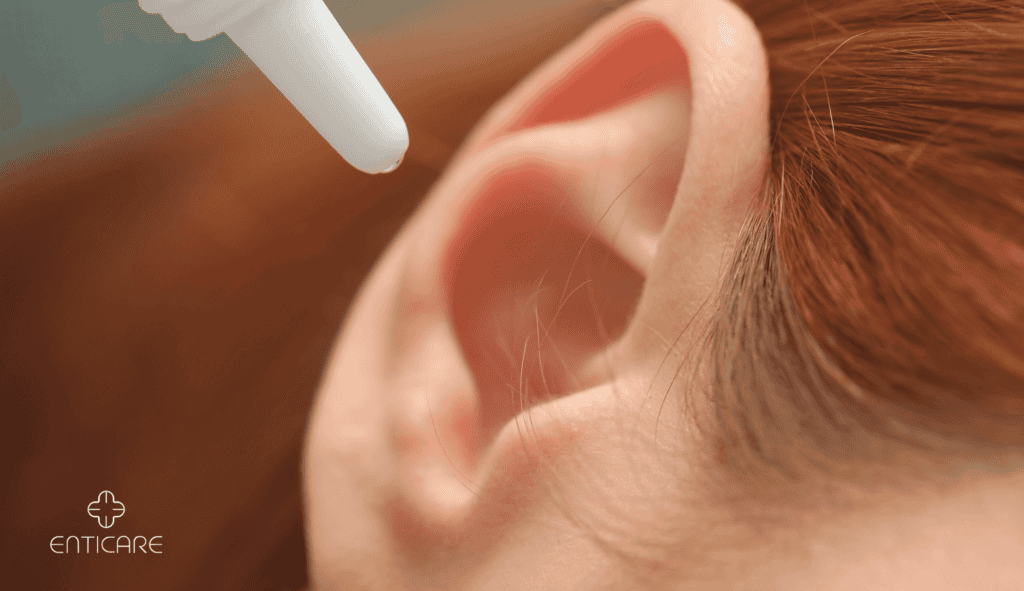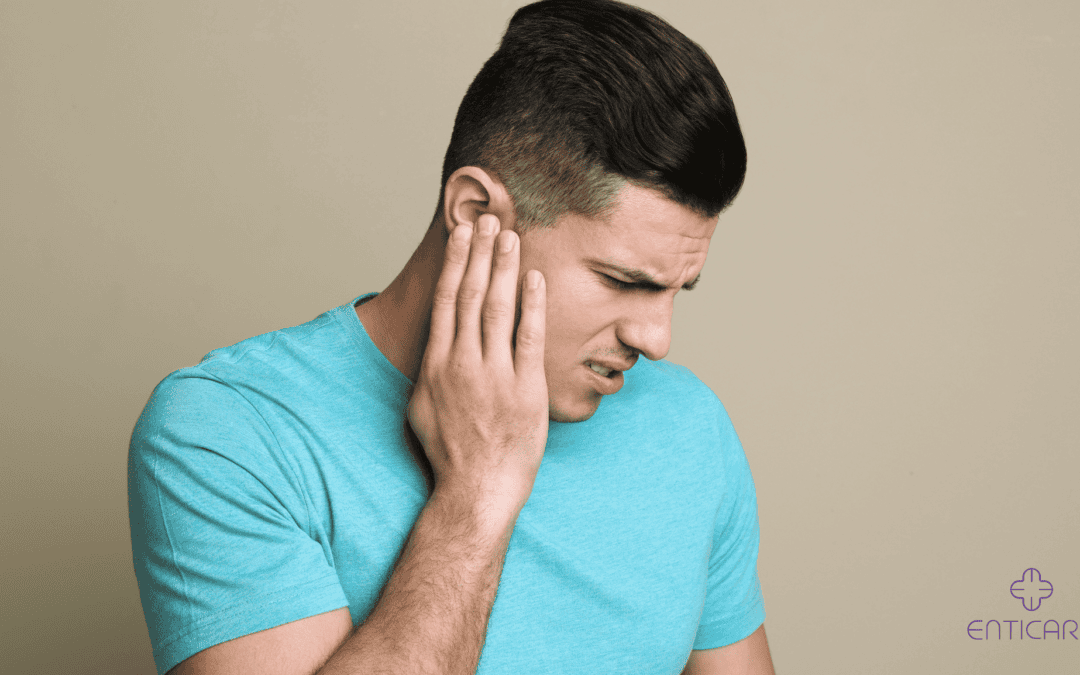Do your ears ever feel blocked or packed, making sounds muffled or distant? This sensation, commonly known as ear stuffiness or clogged ears, can range from mildly annoying to significantly disruptive. For many, it’s a temporary issue that passes on its own, but for others, it lingers and affects their quality of life.
Whether caused by pressure changes, sinus problems, or an underlying condition, understanding the remedies available will help you find relief. Let’s explore what causes this discomfort, how to address it, and when professional intervention is necessary.

What is Ear Stuffiness?
Ear stuffiness, also known as ear congestion, is a common condition characterized by a feeling of fullness or blockage in the ear. This sensation can be caused by various factors, including sinus infections, allergies, colds, and earwax buildup. When experiencing ear congestion, you might notice that sounds seem muffled or distant, and you may have difficulty hearing clearly. Additionally, ear stuffiness can lead to ear pain and discomfort, making everyday activities more challenging. Understanding the underlying causes of ear congestion can help you find effective ways to relieve it and restore your ear health.
Common Causes of Stuffiness in Ear
Eustachian Tube Dysfunction
The eustachian tubes connect the middle ear to the back of the nose and throat, equalizing pressure. When they fail to function correctly due to swelling or blockages, you may feel fullness or pressure in your ears.
Sinus Infections and Allergies
Sinus congestion from colds or allergies can block airflow and trap mucus, creating pressure that extends to the ears. A bacterial sinus infection can also cause ear congestion and may require antibiotics. This often worsens when lying down or during seasonal changes. Sinus related ear congestion can lead to blockages of the Eustachian tube and fluid buildup in the middle ear.
Earwax Blockage
Excess earwax can accumulate and harden, obstructing the ear canal. This creates a muffled feeling as if your ear is clogged or underwater.
Learn more about common ear issues and their causes.

Symptoms and Diagnosis
Identifying Symptoms of Ear Stuffiness
The symptoms of ear stuffiness can vary depending on the underlying cause, but common signs include:
- A persistent feeling of fullness or blockage in the ear
- Hearing difficulties or muffled hearing
- Ear pain or discomfort
- Nasal congestion or sinus pressure
- Frequent coughing or sneezing
- Fever or chills
These symptoms can range from mildly annoying to significantly disruptive, affecting your ability to concentrate and enjoy daily activities. If you experience any of these symptoms, it’s essential to monitor their progression and consider seeking medical advice if they persist or worsen.
Diagnostic Approaches for Ear Congestion
Diagnosing ear congestion typically involves a combination of physical examination, medical history, and diagnostic tests. A healthcare provider may use the following approaches to diagnose ear congestion:
-
- Otoscopy: A visual examination of the ear canal and eardrum using an otoscope. This tool allows the doctor to look inside your ear and check for signs of infection, earwax buildup, or other abnormalities.
- Tympanometry: A test that measures the movement of the eardrum and the reflexes of the middle ear muscles. This can help identify issues such as fluid in the middle ear or eustachian tube dysfunction.
- Acoustic Reflex Testing: A test that measures the reflexes of the middle ear muscles in response to sound. This can provide insights into the functioning of the middle ear and help diagnose potential problems.
- Imaging Tests: Such as X-rays or CT scans, may be ordered to rule out other conditions that may be causing the ear congestion. These tests can provide detailed images of the ear structures and help identify any underlying issues.
In some cases, a healthcare provider may also perform a nasal endoscopy to examine the nasal passages and sinuses for signs of infection or inflammation. This procedure involves using a thin, flexible tube with a light and camera to look inside your nose and sinuses.
It’s essential to seek medical attention if you experience severe ear pain, fever, or discharge from the ear, as these symptoms can indicate a more serious underlying condition. Early diagnosis and treatment can help prevent complications and ensure a quicker recovery.
Remedies to Relieve Ear Stuffiness at Home
Simple Techniques to Relieve Pressure
-
- Yawning or Swallowing: Both actions help open the Eustachian tubes, equalizing pressure.
- Chewing Gum: The repetitive motion stimulates the muscles that help the tubes function.
- Valsalva Maneuver: Pinch your nose, close your mouth, and gently blow. This forces air into the tubes and relieves pressure.
Over-the-Counter Solutions
-
- Decongestant Nasal Sprays: These reduce swelling in the nasal passages, improving airflow. They can also help relieve ear congestion by reducing swelling in the nasal passages.
- Pain Relievers: Medications like ibuprofen or acetaminophen can ease discomfort from inflammation.
- Ear Drops: Specialized drops can soften hardened earwax for easier removal.
Natural Remedies for Ear Comfort
-
- Steam Inhalation: Breathing in steam loosens mucus and improves sinus drainage.
- Warm Compress: Apply a damp cloth to your ear to soothe discomfort and promote circulation.
- Saltwater Gargle: This reduces throat swelling, indirectly relieving pressure in the ears.
Long-Term Strategies for Managing Ear Health
Tips to Prevent Chronic Ear Congestion
-
- Avoid smoking or exposure to pollutants irritating your sinuses and Eustachian tubes.
- Use a humidifier to keep your airways moist, especially during dry seasons.
- Take breaks during air travel to equalize pressure, such as chewing gum or using filtered earplugs.
The Importance of Hydration and Nutrition
Staying hydrated thins mucus and supports your body’s natural defense systems. A diet rich in antioxidants, like fruits and vegetables, reduces inflammation and promotes overall ear health.
When to Consider Lifestyle Adjustments
- Manage allergies with regular medication or immunotherapy to reduce sinus-related ear issues.
- Maintain a healthy weight, as obesity can increase pressure in the ear’s drainage systems.
- Incorporate regular exercise to improve circulation and reduce inflammation.
- Manage chronic ear congestion through regular medical check-ups and timely interventions to prevent severe complications such as long-term hearing impairment and chronic ear infections.

When to Seek Professional Help
Red Flags That Require Medical Attention
-
- Persistent stuffiness that lasts more than a week.
- Severe pain, fever, or drainage from the ear.
- Noticeable hearing loss or ringing in the ears.
How ENT Specialists Diagnose and Treat Stuffiness
ENT doctors use tools like otoscopes and hearing tests to determine the underlying cause. They may also recommend imaging, such as a CT scan, for complex cases involving the sinuses.
Advanced Medical Interventions for Persistent Cases
-
- Earwax Removal: ENT specialists can safely extract hardened wax.
- Myringotomy: A minor surgical procedure to drain fluid from the middle ear.
- Balloon Sinus Dilation: Opens blocked sinus passages to relieve pressure and improve airflow.
Find Relief and Restore Comfort Today
Ear stuffiness can disrupt your daily life, but solutions are within reach. You can find relief and maintain long-term ear health by addressing the underlying causes and trying effective remedies. If your symptoms persist or worsen, schedule an appointment with Enticare for expert care tailored to your needs.

